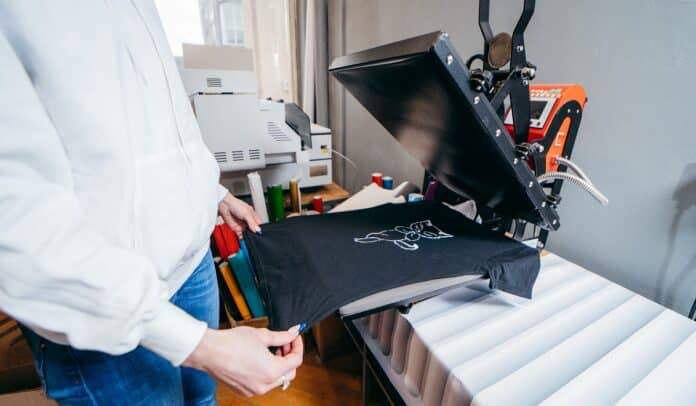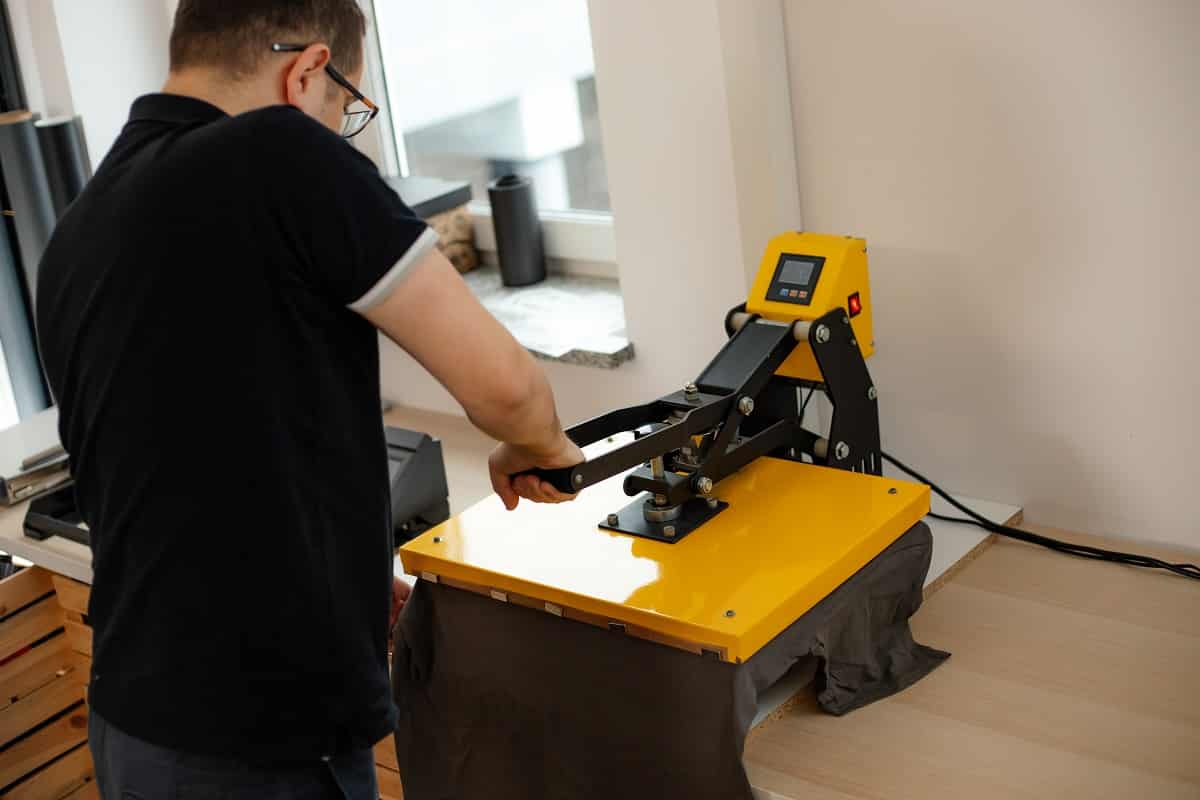
Disclaimer | This article may contain affiliate links, this means that at no cost to you, we may receive a small commission for qualifying purchases.
Are you looking to make your own t-shirt designs instead of buying readymade ones from online and offline stores? Then you can give heat transfer printing a try!
Modern printing technologies have evolved a lot over the years. Today, you will find printing techniques that can print not only on papers but also on metals, plastic, wood, and fabric. In case you are looking for some of the best heat transfer printers, do check out the previous link.
The method of printing by heat transfer is one that has emerged in recent times. It is very similar to other printing techniques, such as screen printing or sublimation printing.
Heat transfer printing is pretty affordable and extremely rewarding as a hobby and trade, but it also can be a really time-consuming process. If you are wondering how to print on heat transfer vinyl with inkjet or what the cost of heat transfer paper is do check out our previous articles to help you get started if you are already convinced.
If you are still trying to make up your mind, let’s discuss the different advantages and disadvantages of heat transfer printing in this guide, we will have a blast!
So, without waiting any further, let’s get into it!
What Is A Heat Transfer And How Does It Work?

Before we get to the benefits and drawbacks of heat transfers, it is essential to know what heat transfer printing is.
This method of printing is relatively new compared to screen printing and it has gained considerable popularity over the last couple of decades. It involves transferring designs and artwork from one surface to another with the help of heat and pressure.
Now, most heat transfer presses usually transfer prints to substrates, such as paper, fabrics, or ceramics. However, this process is relatively versatile as you can use the heat press machine on different materials, and not just the ones mentioned above. Then again, this makes heat transfer printing somewhat complex compared to methods like screen printing.
Initially, the design is first printed on heat transfer paper, which is a special type of paper critical to the process. It typically has a wax coating, due to which it has a relatively smooth surface, making it the perfect medium for transferring the ink.
The prints on the paper are then transferred to a suitable substrate by using heat press machines. They apply heat and high pressure for a certain duration to transfer the print.
Advantages Of Heat Transfers
Now that you know what heat transfer printing is and how it is done let’s look at some of its biggest advantages.
1. Cost-Effective
Heat transfer prints are considerably more cost-effective than other similar methods like screen prints. Like we have already mentioned before, you can use any modern inkjet or laser printer for printing on heat transfer papers.
Besides, the heat press machine is quite inexpensive. Due to these aspects, the unit cost for printing a t-shirt using this process is significantly lower.
So, it is the ideal printing method for small businesses and aspiring young artists who want to set up their own t-shirt printing business. Since they may not have an extensive budget, this is the best means for them to get started!
2. Versatile
Heat transfer is a versatile process compared to screen printing or sublimation printing, which follow a similar method. It can be used for making prints on fabric, as well as other materials, such as plastic, ceramic, or glass. Thus, using this method, printing on any custom object becomes incredibly easy and convenient.
All you need to do is print a suitable image on heat transfer paper. Subsequently, the heat press machine will be able to embed the design on the material you choose.
What’s more, the heat press machine is relatively small in size, due to which it takes up very little room. So, you can efficiently dedicate the remaining space in your printing studio for other printing activities.
3. User-Friendly
Heat transfers are pretty user-friendly as well, especially compared to conventional printing techniques. You can print on the transfer paper using an everyday printer, which is relatively straightforward.
Besides, the heat transfer machine is quite simple to operate, so you can learn to use it in no time. In other words, you can easily make heat transfer prints, even if you have no prior experience in printing.
4. Good Quality
Thanks to the high temperatures and pressures used in heat transfer machines, the print designs produced are of high quality. As such, you can use this printing method to print t-shirts with intricate and vivid designs.
For small businesses and new artists, this proves to be beneficial. It provides them with a means to print complex designs and multiple colors with professional results economically.
Disadvantages Of Heat Transfers
1. Time-Consuming
The method of heat transfer is relatively more time-consuming compared to screen printing or any other conventional printing techniques. That is because you need to follow a two-step process. You first have to print the design on the heat transfer paper before transferring it to the desired material.
Furthermore, the duration of heat pressing lengthens this process. After all, the heat transfer machine needs some time to transfer the design from the paper to the substrate!
2. Not Suitable For Printing High Volumes
Despite being so versatile and user-friendly, heat transfers cannot be used for printing bulk volumes of merchandise. For that purpose, established methods, such as screen printing are more appropriate.
This is because printing even one item using this method takes a lot of time, as we have discussed in the previous point. Apart from that, opting for heat transfer printing in bulk will require a lot of ink, paper, and other resources. As a result, it will not be economically feasible in such cases.
3. The Prints Fade Easily
Compared to sublimation prints, heat transfer prints are not very durable. They might easily fade away if you use them for a while, especially after machine washing the fabric a few times.
This happens because the heat transfer prints form a layer over it. In contrast, sublimation prints become a part of the fabric, due to which they do not fade as quickly.

Advantages And Disadvantages Of Heat Transfer Printing Final Words
And those were some of the advantages and disadvantages of the heat transfer method. This technique is obviously quite effective for printing t-shirts, mugs, and other merchandise, but it has its limitations.
So, if you are looking to start a print business of your own, do keep these aspects in mind. Weighing the pros and cons should help you decide how to best set up your business to gain a high-profit margin.
If your target audience is small, then adopting this printing technique will be beneficial. But if you want to produce bulk prints, then you should consider other methods, such as screen printing.
With that, we have arrived at the end of this brief guide. We will be back with more such guides in the future.
Until then, it’s a wrap. Take care, everyone!


